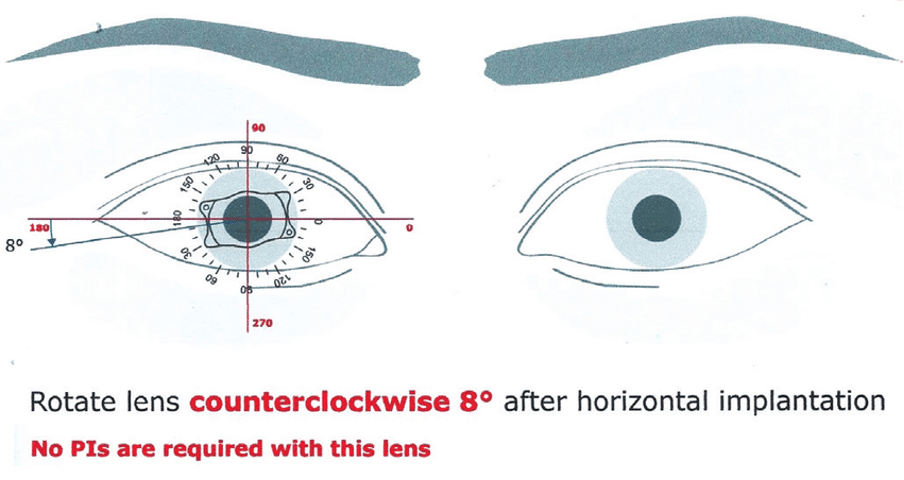Patients with keratoconus need to understand the difference between Cross-Linking and Corneal Transplant to make the right choice for their eye care. Cross-linking works well for more than 90% of patients and stops keratoconus from getting worse. The FDA approved this groundbreaking treatment in 2016. It uses vitamin B2 and ultraviolet light to make the corneal collagen structure stronger.
The treatment landscape for keratoconus looks very different over the last several years. The accelerated corneal cross linking procedure needs just 20 minutes per eye. Patients don’t stay overnight in the hospital and most return to their regular activities within a week. Advanced cases might still need a corneal transplant. The number of corneal transplants for keratoconus patients has dropped substantially since doctors started using cross-linking. Only 3.1% of all corneal transplants in 2021-2022 were for keratoconus patients.
Cross-linking’s main goal focuses on stabilising your corneas rather than improving vision right away. Patients usually notice results after several weeks or months. Some people see improvements even one year after their procedure. This piece takes a detailed look at both treatment options to help you choose the best path for your keratoconus care.

From Diagnosis to Decision: Understanding Your Options
Modern tests at Precision Vision London can measure your cornea’s shape and thickness with amazing precision. Our corneal topography and tomography equipment creates detailed maps of your cornea that detect early signs before regular exams can spot them. This advanced technology measures both front and back corneal surfaces and gives us a full picture that older methods couldn’t provide.
Your chances of developing keratoconus are highest during teenage years or early adulthood. The condition affects up to 1 in 450 people, with rates varying by ethnicity. Our specialists determine how severe the condition is by looking at corneal thinning, steepening, and how it affects your vision. We need to watch the condition closely in patients under 35 because the cornea naturally becomes more rigid after this age.
Your age, how fast the disease progresses, corneal thickness, and any scarring help us decide the best treatment. The good news is that corneal cross-linking stops the disease from getting worse in over 90% of cases. Some patients might need a corneal transplant if they develop serious scarring or can’t wear contact lenses anymore.
At Precision Vision London, we use cutting-edge imaging technology to check your corneal health. Our specialists will help you understand whether cross-linking or, in more advanced cases, a corneal transplant would work best for your situation.
Corneal Cross Linking and Corneal Transplant Compared

Corneal cross-linking and corneal transplantation offer two completely different ways to treat keratoconus. Cross-linking helps stop the disease from getting worse with over 95% success rate. Corneal transplantation takes a different approach by replacing the damaged cornea to bring back vision in advanced cases. These treatments vary in how complex they are. Cross-linking needs minimal invasion and local anaesthesia. The procedure takes about 60-90 minutes and patients go home the same day. Corneal transplantation involves more complex surgery and recovery time. Patients need two weeks away from work, and their vision might take 12-18 months to stabilise.
Cross-linking has made a huge impact by reducing the need for transplants. Keratoplasties dropped by 80% at Oslo University Hospital in the 15 years after they started using cross-linking. This makes cross-linking an economical choice compared to standard treatment, with an extra cost of £3,174 per QALY.
Transplantation still plays a vital role for patients with advanced disease. One in every 4 corneal transplants today treats keratoconus. Patients can choose between two main transplant types – full-thickness penetrating keratoplasty (PK) or partial-thickness deep anterior lamellar keratoplasty (DALK). PK shows great results with 90% of patients keeping clear grafts for more than 10 years. The right treatment choice makes all the difference in keratoconus care. Our specialists at Precision Vision London will assess your condition thoroughly to recommend the best approach – whether that’s cross-linking, a corneal transplant, or something else for your eyes.
Precision Vision London’s Approach to Keratoconus Care
Precision Vision London creates personalised treatment plans for each patient’s unique corneal condition. The clinic’s approach to keratoconus care uses advanced diagnostic technologies. Their tools include Pentacam and OCT imaging that precisely map corneal irregularities and thickness variations.
The specialist team provides both corneal cross-linking and transplantation procedures based on complete assessment results. Cross-linking serves as the main intervention for early to moderate keratoconus and successfully halts progression in more than 90% of cases. The clinic’s surgeons use the latest accelerated cross-linking protocols that substantially reduce treatment time while maintaining effectiveness. The surgical team performs both traditional penetrating keratoplasty and modern deep anterior lamellar keratoplasty techniques for advanced cases where cross-linking isn’t enough. Their surgical outcomes are a big deal as it means that national averages with graft survival rates reach 95% at five years post-surgery.
Patient care goes beyond the procedure itself. The treatment experience has complete pre-operative counselling, detailed aftercare instructions, and scheduled follow-up appointments. The clinic’s approach combines technical excellence with emotional support throughout the treatment process. Precision Vision London’s integrated care pathway ended up giving patients the most appropriate intervention at the optimal time. This maximises visual outcomes and minimises intervention risks.
Comparison Table
| Aspect | Corneal Cross-Linking | Corneal Transplant |
|---|---|---|
| Main Goal | Stop disease from getting worse | Replace damaged cornea to bring back vision |
| Success Rate | Works over 90% of the time to stop progression | 90% of PK patients keep clear grafts beyond 10 years |
| Procedure Duration | 20-90 minutes for each eye | Not specifically mentioned |
| Recovery Period | Back to normal activities within a week | Time off work: 2 weeks; Vision stabilises in 12-18 months |
| Anaesthesia Type | Local anaesthesia | Not specifically mentioned |
| Invasiveness | Minimal surgical intervention | More complex surgery |
| Hospital Stay | Same-day procedure, go home after | Not specifically mentioned |
| Treatment Type | Combines vitamin B2 with ultraviolet light | Options include full-thickness (PK) or partial-thickness (DALK) |
| Best Time to Use | Early to moderate cases with advancing keratoconus | Advanced cases with heavy scarring or impossible contact lens use |
| Effect on Future Care | Reduces need for corneal transplants by 80% | N/A |
| Results Timeline | Changes show up after several weeks, keeps improving up to a year | Vision becomes stable in 12-18 months |
Conclusion
Medical advances have transformed keratoconus management over the last several years. Cross-linking has become a game-changer for most patients. This simple procedure stops disease progression in over 90% of cases and reduces the need for corneal transplants. Without doubt, catching the condition early plays a vital role because cross-linking works best in the initial stages.
These treatments show stark differences in recovery time. Patients bounce back from cross-linking in about a week. Corneal transplants need much longer healing—up to 18 months for stable vision. Yet transplants remain the best option for advanced cases with heavy scarring or when contact lenses no longer help.
Keratoconus treatment needs expert guidance. Precision Vision London’s state-of-the-art diagnostic technology gives a detailed assessment to find the right treatment for your condition. The clinic’s specialists excel at both procedures. Their transplant success rates are a big deal as it means that they surpass national averages.
Your treatment choice should match both your current needs and future vision goals. You might need cross-linking to stabilise your condition or a transplant to bring back your vision. Either way, personalised care remains key throughout your treatment experience. Cross-linking’s introduction has cut down transplant needs substantially, showing how new treatments keep improving outcomes for UK’s keratoconus patients.
Your unique corneal profile determines whether you need cross-linking or a corneal transplant. Precision Vision London’s personalised approach will give you the right treatment at the perfect time. This maximises your vision outcomes while keeping risks low. Your eyes deserve this highest level of care throughout your keratoconus treatment.
FAQs
Q1. How long does recovery take after corneal cross-linking? Recovery typically takes about a week, during which you’ll wear a bandage on your eye. Vision gradually improves over this period, and most patients can return to normal activities within a week.
Q2. Can corneal cross-linking improve my vision? While the primary goal of cross-linking is to halt keratoconus progression, studies have shown that it can improve vision in 60-81% of patients treated. However, immediate vision improvement is not the main objective of the procedure.
Q3. What precautions should I take after corneal cross-linking? After the procedure, avoid rubbing your eyes for at least five days, protect your eyes from water, and refrain from using eye makeup for several days. If you experience worsening eyesight or severe pain, contact your doctor immediately.
Q4. Is it necessary to wear sunglasses after corneal cross-linking? You may experience increased light sensitivity following the procedure, so wearing sunglasses in bright light is recommended to alleviate discomfort. This sensitivity usually subsides as your eye heals.
Q5. How does corneal cross-linking compare to corneal transplant in terms of recovery time? Corneal cross-linking has a significantly shorter recovery time, with most patients returning to normal activities within a week. In contrast, corneal transplant recovery can take several weeks off work, with full visual stability potentially taking 12-18 months to achieve.
Authors & Reviewer
-
 Olivia: Author
Olivia: AuthorHi, I'm Olivia, a passionate writer specialising in eye care, vision health, and the latest advancements in optometry. I strive to craft informative and engaging articles that help readers make informed decisions about their eye health. With a keen eye for detail and a commitment to delivering accurate, research-backed content, I aim to educate and inspire through every piece I write.
-
 Dr. CT Pillai: Reviewer
Dr. CT Pillai: ReviewerDr. CT Pillai is a globally recognised ophthalmologist with over 30 years of experience, specialising in refractive surgery and general ophthalmology. Renowned for performing over 50,000 successful laser procedures.

